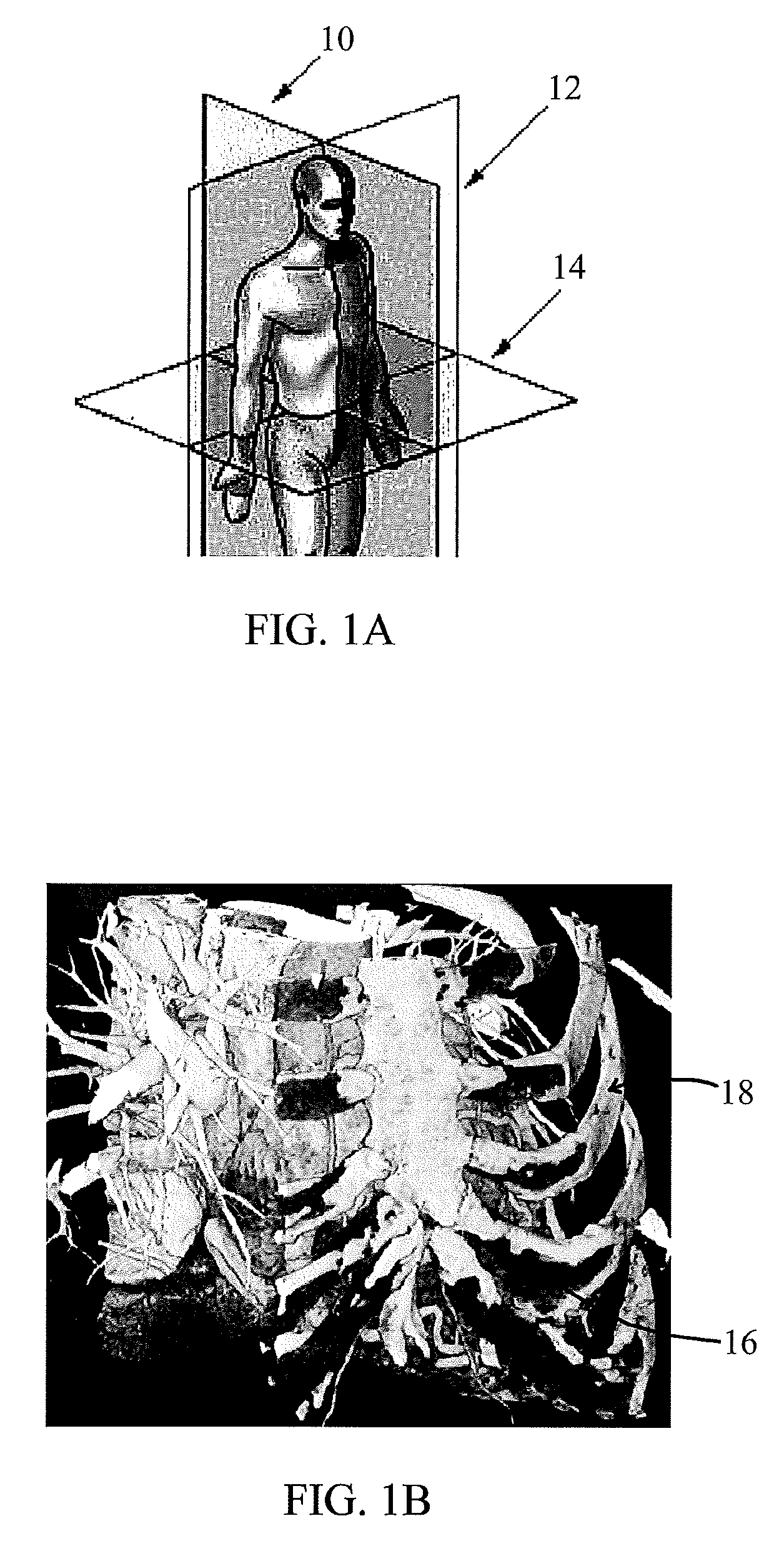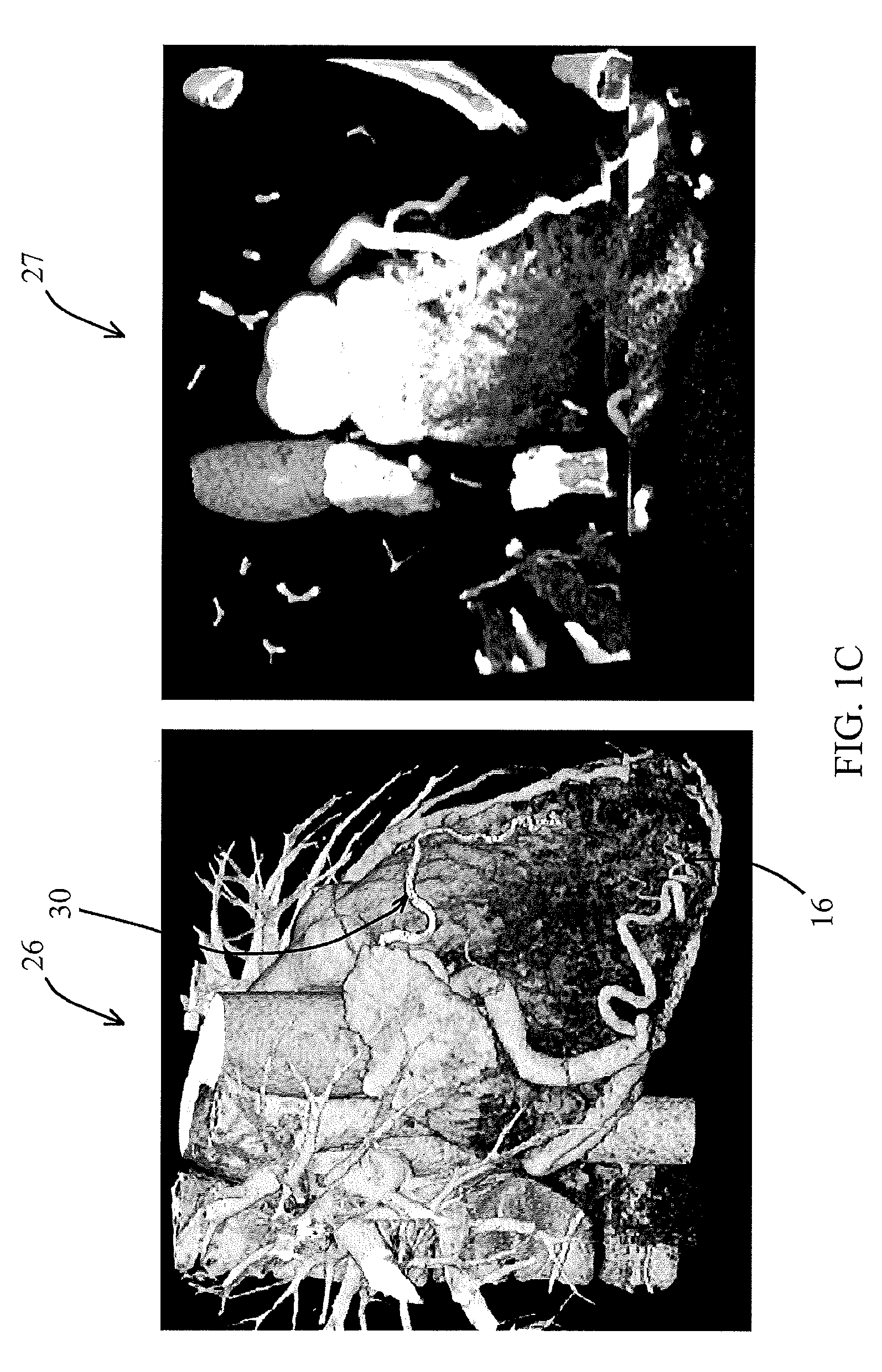Adaptive visualization for direct physician use
a technology of adaptive visualization and direct physician use, applied in the field of three-dimensional medical image computer processing, can solve the problems of suffering from intra-observer or inter-observer variability, and increasing the size of medical scans, so as to achieve accurate diagnostic decisions
- Summary
- Abstract
- Description
- Claims
- Application Information
AI Technical Summary
Benefits of technology
Problems solved by technology
Method used
Image
Examples
Embodiment Construction
[0061]In describing the embodiment of the present invention, reference will be made herein to FIGS. 1-14 of the drawings in which like numerals refer to like features of the invention.
[0062]Medical image segmentation seeks to separate important anatomy from the image background. However, such methods are performed by a scan technician and are time consuming, and error prone. The present invention is directed to an on-demand and adaptive 3D intelligent visualization application that the physician can use to improve diagnosis and patient care without a technician's help.
[0063]Medical image segmentation seeks to change the representation of a medical scan to make it more amenable to interpretation by a physician. The extreme variability within the image requires that a scan technician be employed to separate important anatomical structures from the image background. Methods are time consuming and error prone and can lead to diagnostic inaccuracy. A solution to this problem is a semi-au...
PUM
 Login to view more
Login to view more Abstract
Description
Claims
Application Information
 Login to view more
Login to view more - R&D Engineer
- R&D Manager
- IP Professional
- Industry Leading Data Capabilities
- Powerful AI technology
- Patent DNA Extraction
Browse by: Latest US Patents, China's latest patents, Technical Efficacy Thesaurus, Application Domain, Technology Topic.
© 2024 PatSnap. All rights reserved.Legal|Privacy policy|Modern Slavery Act Transparency Statement|Sitemap



